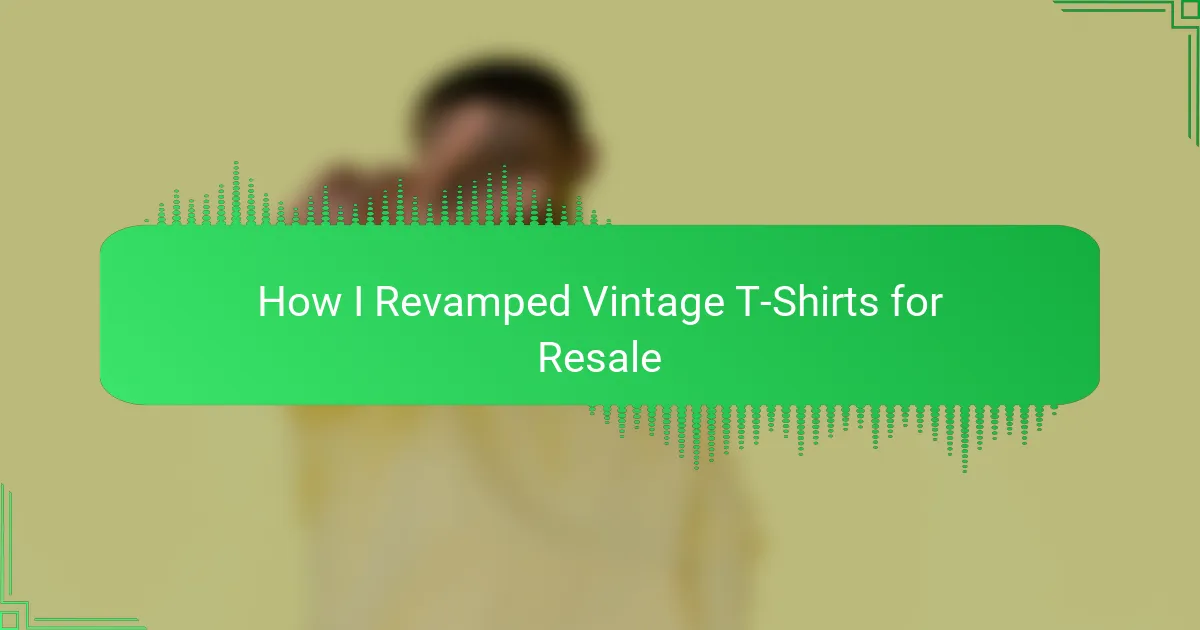Key takeaways
- Vintage t-shirts are valued for their unique designs and cultural significance, reflecting moments in history.
- Key design elements include color, typography, and imagery, all contributing to the shirt’s overall character.
- Revamping vintage tees requires careful selection based on fabric condition and story potential, balancing preservation with creativity.
- Successful resale involves high-quality presentation, thoughtful pricing based on craftsmanship, and clear communication about the piece’s history and design process.
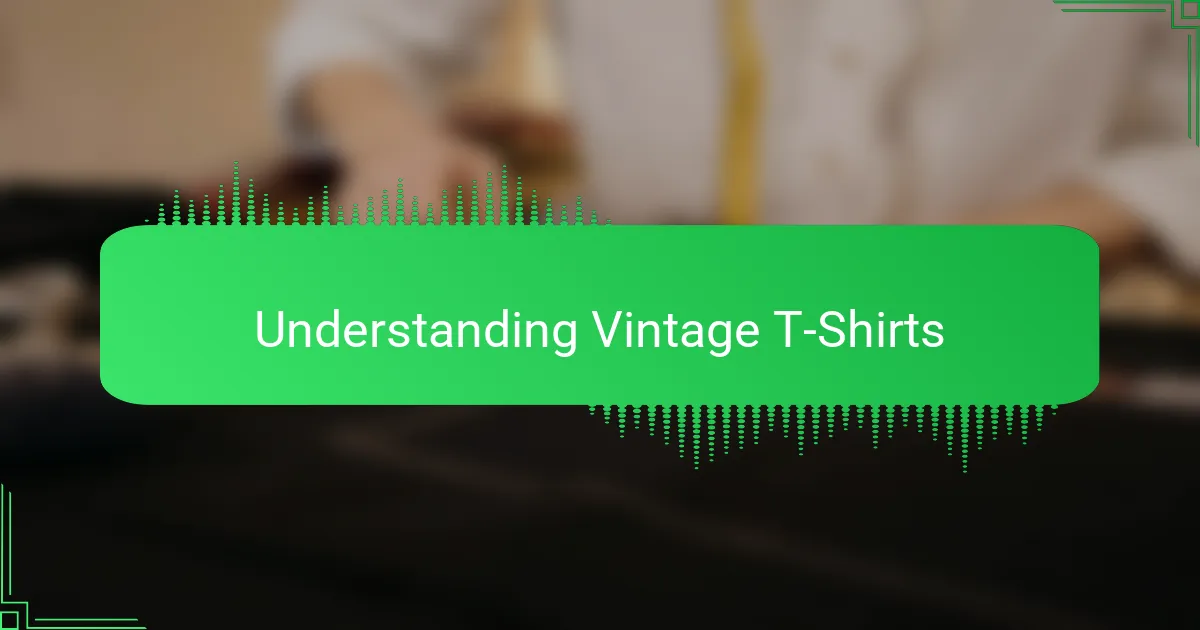
Understanding Vintage T-Shirts
Vintage t-shirts carry a unique charm that new tees simply can’t replicate. I’ve always been drawn to the subtle imperfections—the faded prints, slight fabric wear—that tell stories from years gone by. Have you ever held a vintage shirt and wondered about the memories it’s witnessed?
What sets vintage t-shirts apart is more than age; it’s about their design originality and cultural significance. When I first started collecting them, I realized these shirts reflected moments in music, movies, or events that shaped generations. Don’t you think that adds a whole new layer of value beyond just aesthetics?
But understanding vintage tees isn’t just about admiring their look. It’s about recognizing the delicate fabric and unique wear patterns that influence how you can restore and reimagine them. I’ve learned to treat each one carefully, almost like handling a cherished piece of history.
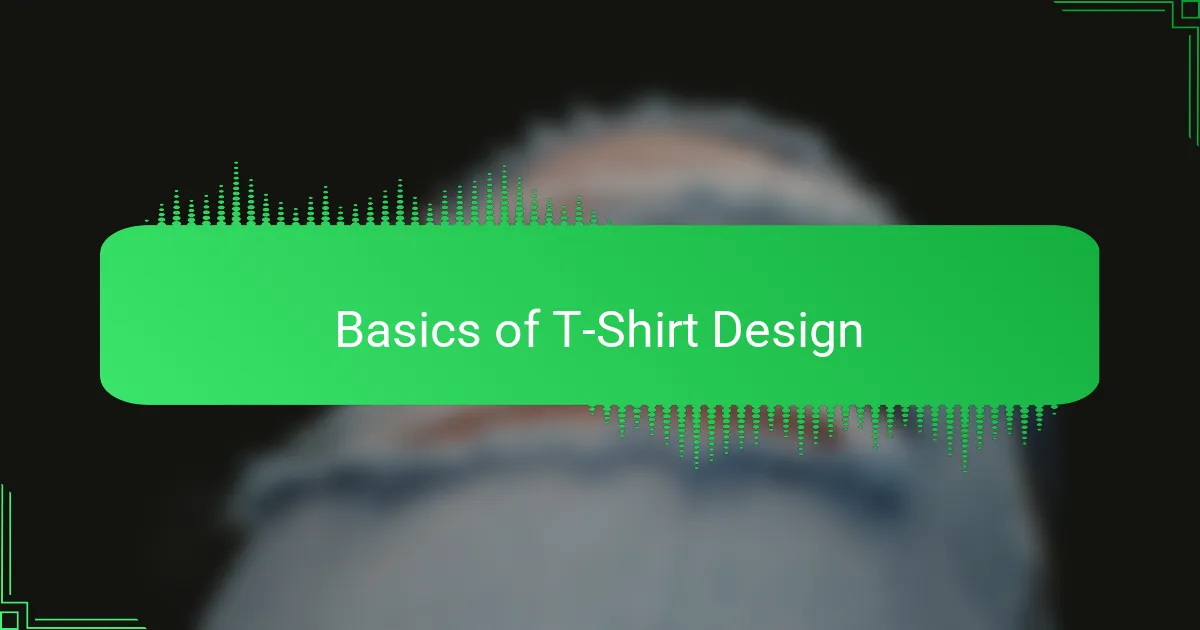
Basics of T-Shirt Design
Designing t-shirts, in its simplest form, revolves around a few core principles: color, typography, and imagery. When I started experimenting, I quickly saw how a bold color choice could transform the vibe of a shirt at first glance. Have you noticed how some colors instantly evoke certain moods or memories? That’s exactly the kind of power you want to harness.
Typography is another element that often gets overlooked but can truly make or break a design. I once tried using a font that felt modern for a vintage tee, and it just didn’t sit right—it lacked that timeless feel. It taught me to pair lettering styles carefully with the shirt’s overall character to keep everything cohesive and authentic.
Imagery, of course, brings life to any t-shirt. Whether it’s a simple graphic or a detailed illustration, it needs to resonate with the wearer. I remember revamping a vintage band tee by tweaking the original design just enough to feel fresh, but without losing its soul. That balance between old and new is where real creativity shines.
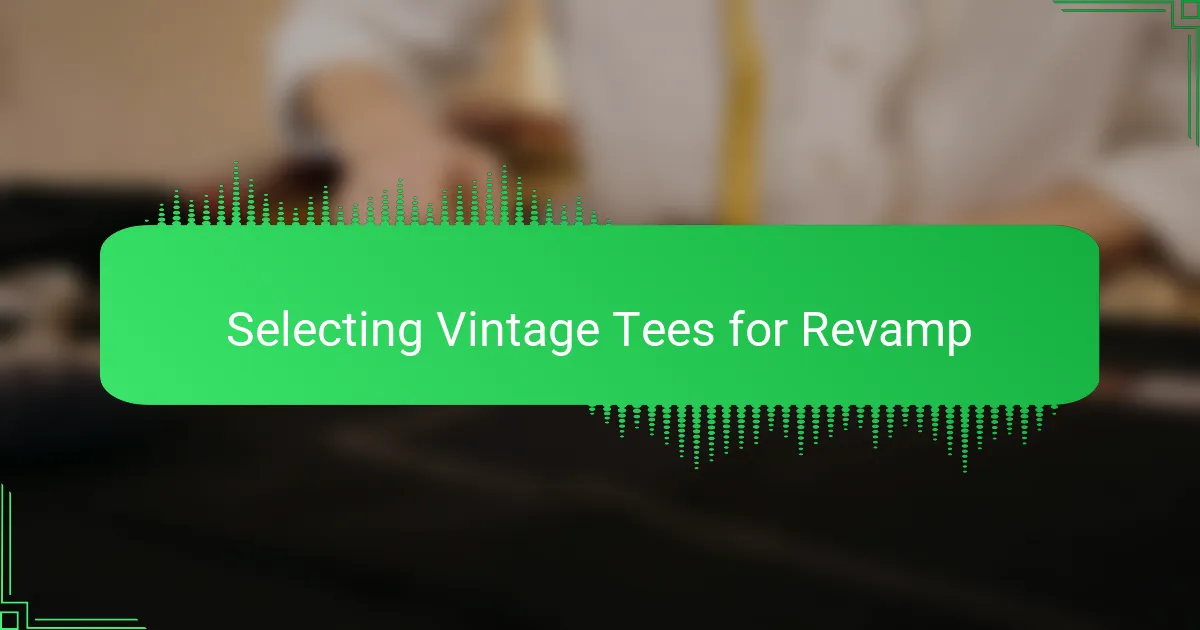
Selecting Vintage Tees for Revamp
Choosing the right vintage tees to revamp has always felt like a treasure hunt for me. I tend to look for shirts with interesting graphics and visible signs of wear that tell a story but haven’t completely worn out. Have you ever picked up a shirt and instantly imagined what its life has been like before it reached you?
Fabric condition is another factor I’m cautious about. I’ve learned that some vintage tees, while charming, are too fragile to handle extensive redesigns without losing their integrity. It’s a delicate balance—selecting pieces that still have enough life left to be transformed into something new, yet retain their vintage soul.
Patterns, colors, and even the shirt’s cut play a role in my selection process. Sometimes, a faded faded hue or a classic shape can spark an idea for a fresh design twist. Do you ever find that certain details just ignite your creativity and make a particular shirt impossible to pass up? That’s usually the sign I’m holding a winner.
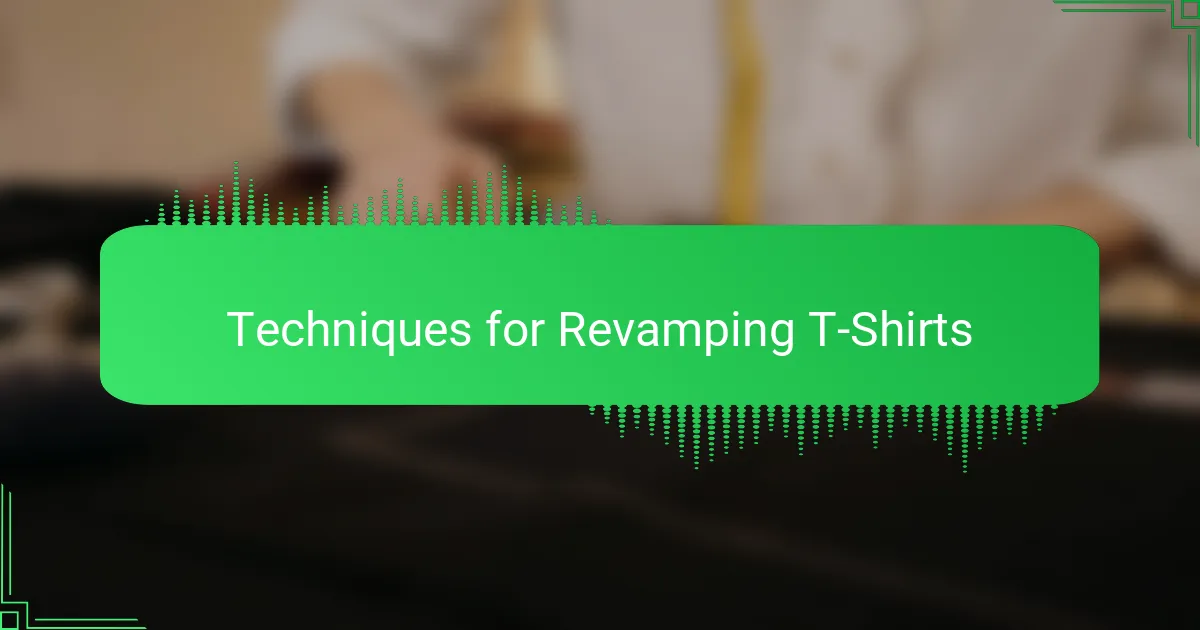
Techniques for Revamping T-Shirts
One technique I rely on heavily is fabric distressing—carefully sanding or washing parts of the t-shirt to soften worn areas while enhancing that vintage vibe. Have you ever noticed how a little extra fray or subtle fading can instantly turn a plain tee into something with character? It’s a simple trick, but when done right, it breathes new life into the fabric without stealing its story.
Screen printing and embroidery are also go-to methods for me when adding fresh details. I remember once stitching a small embroidered patch over a hole on a vintage shirt, and it not only fixed the flaw but gave the tee a unique focal point. Don’t you think these tactile touches can make a design stand out in a sea of mass-produced t-shirts?
Then there’s the art of bleaching and tie-dyeing, which allows me to play creatively with color and texture. Sometimes I experiment by selectively applying bleach to create patterns that complement the original print instead of overpowering it. It’s like collaborating with the shirt’s past while pushing its look into a new era—how satisfying is it to see such transformation occur firsthand?
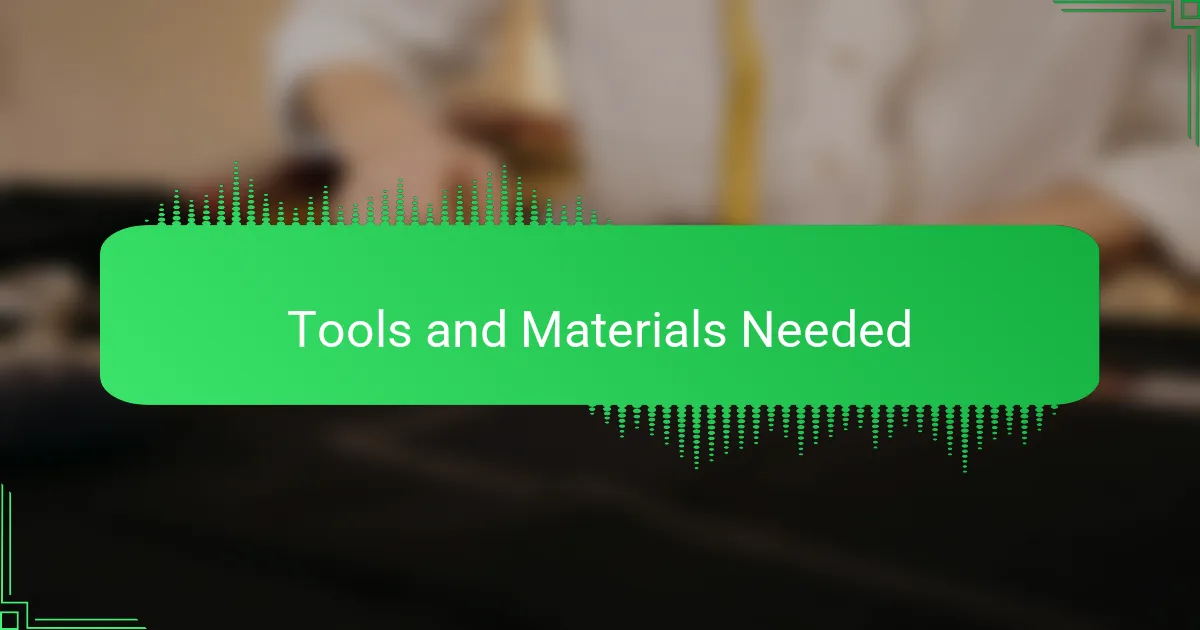
Tools and Materials Needed
To truly transform vintage t-shirts, having the right tools and materials is essential. I always start with basic sewing supplies—needles, threads in various colors, and sturdy scissors. These simple items are the foundation for many repairs and customizations, and I find that having a good pair of fabric scissors makes all the difference in achieving clean cuts without damaging delicate fabric.
Next, I gather embellishment materials like embroidery floss, patches, and fabric paints. I remember the excitement of discovering how small embroidered designs could breathe new life into a tired tee, turning it from worn-out to one-of-a-kind. Don’t underestimate the power of these materials—they add personality and charm that machine prints often can’t replicate.
Finally, specific tools for distressing or altering fabric are crucial. Sandpaper, bleach pens, and even a heat press have become staples in my kit. I once experimented by lightly sanding a faded graphic, and the result was this beautifully worn effect that felt both intentional and authentic. Have you tried incorporating these tactile techniques? They invite you to connect with the shirt’s history while boldly rewriting its future.
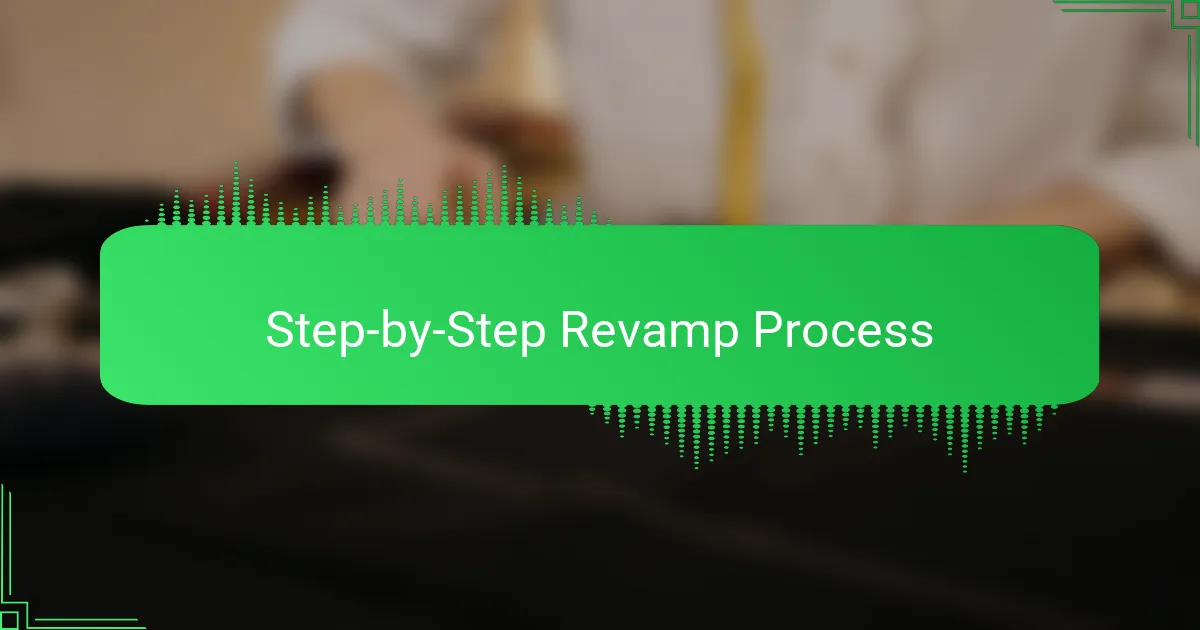
Step-by-Step Revamp Process
The first step I always take is giving each vintage tee a thorough inspection—checking fabric strength, seams, and print condition. Have you ever handled a shirt so fragile it feels like it could tear with a simple touch? That moment tells me exactly how much revamping it can handle without losing its vintage soul.
Next, I carefully plan the design tweaks, balancing preservation with creativity. I recall one time when I almost covered a faded band logo with embroidery but stepped back, realizing that subtle wear was part of its charm. Do you ever find it hard to decide when to enhance and when to let the original story shine through?
Finally, I dive into the hands-on work: distressing with gentle sanding, reinforcing weak spots with stitching, and adding personalized touches like patches or paint. It’s messy, rewarding work that feels like breathing new life into an old friend. Isn’t it amazing how a few careful strokes can transform a worn tee into a unique piece ready for a new journey?
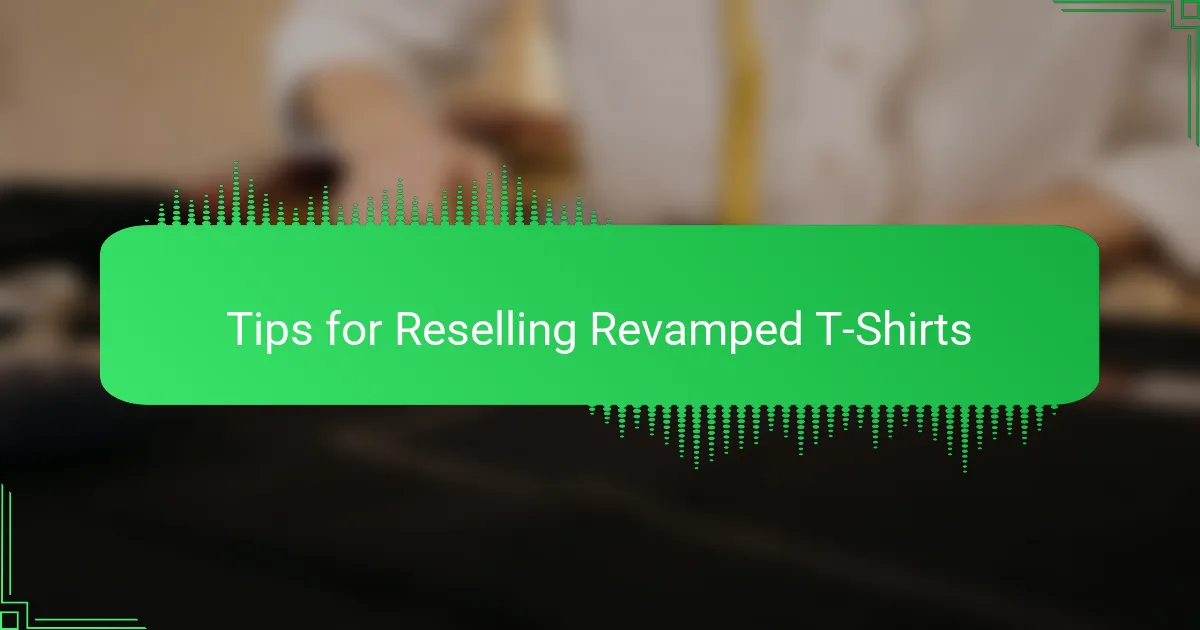
Tips for Reselling Revamped T-Shirts
When it comes to reselling revamped vintage t-shirts, presentation is everything. I’ve found that high-quality photos showing both the details of the redesign and the vintage character really help buyers connect emotionally with the piece. Have you ever hesitated to buy something online because the pictures just didn’t capture its essence? That’s why I make sure to showcase texture, color, and any unique embellishments clearly.
Pricing can be tricky, too. I learned early on that setting a price reflects more than just the cost of materials—it’s about the story and skill invested. I usually compare similar revamped tees but also factor in how much time I spent perfecting the design. Don’t you think a shirt with a visible hand-stitched patch or custom distressing deserves a little extra value?
Finally, I can’t stress enough the importance of clear communication with buyers. Describing the tee’s history and the revamp process in the listing adds authenticity and builds trust. When I share why I chose certain techniques or what inspired the design, customers seem to appreciate the transparency—and it often leads to repeat business. Have you noticed how knowing a product’s backstory makes it feel more special?
